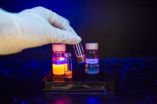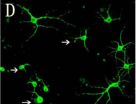(Press-News.org) A recent study in the journal Human Vaccines & Immunotherapeutics, showed that two doses of the HPV-16/18 AS04-adjuvanted vaccine Cervarix (GlaxoSmithKline) are non-inferior to three-doses in the current schedule.
Since high coverage and compliance rates can be difficult to achieve with the current three-dose HPV vaccineregimen, several studies have looked at the possibility of reducing the number of doses. Proof-of-principle that a two-dose schedule can provide sufficient protection against cervical cancer came initially from a study performed in Costa Rica in 2011. Since then, several countries have considered switching to a two-dose schedule or have already done so. The European Commission recently granted marketing authorization for Cervarix as a two-dose schedule for girls aged 9-14 years, and outside of the EU, the Cervarix two-dose schedule is approved in more than ten countries, including Panama, Guatemala, Honduras, El Salvador, Haiti, Suriname, Chile, Guyana, Nigeria, Ghana, Pakistan, and Bangladesh.
The randomized, partially-blinded Phase I/II clinical trial evaluated the immunogenicity and safety of two doses of the licensed formulation of Cervarix (20 µg each of HPV-16 and HPV-18 L1 VLPs, ,20/20') or an alternative formulation (40 µg of each HPV-16 and HPV-18 VLPs; ,40/40') in different age groups, compared with the standard three-dose schedule of the licensed formulation. Healthy females (age stratified: 9-14, 15-19, 20-25 years) were randomized to receive two doses of vaccine at months 0 and 6, or three doses of the vaccine at months 0, 1, and 6.
The trial was initiated in 2007 and conducted at 21 centers in Canada and Germany. Results from 24 months of analysis were previously published in HV&I, and the current study presents results from 48 months of analysis. Since the two-dose 40/40 formulation gave no added benefit, the current study focused on data for the two-dose 20/20 formulation in girls aged 9-14 years and the standard three-dose 20/20 schedule in women aged 15-19 years.
The researchers reported that all initially seronegative subjects seroconverted for HPV-16 and HPV-18 antibodies and remained seropositive up to 48 months. The kinetics of HPV-16, -18, -31, and -45 antibody responses were similar for both groups, and the HPV-16 and -18 geometric mean antibody titers were substantially higher than titers following natural infection. The vaccine had a clinically acceptable safety profile in both groups. In summary, antibody responses to a two-dose schedule of the licensed vaccine formulation in girls aged 9-14 years appeared comparable to the standard three-dose schedule in women aged 15-19 years for up to four years after first vaccination.
These results show that a two-dose schedule should confer a similar level of protection against HPV infections and subsequent development of cervical lesions and cancer as the current three-dose schedule. A two-dose schedule obviously would be more convenient for physicians and patients, and could help reduce associated costs. The authors think that these benefits could facilitate the implementation of HPV immunization programs in low-income countries, as well as improve the relatively low vaccine coverage and series completion rates observed in some developed countries.
"Compliance has been a major challenge for HPV vaccination. These data reinforce the value of the two-dose schedule and should lead to increased utilization of this vaccine, with consequent decreases in morbidity and mortality from cervical cancer," said Dr. Ronald Ellis, Editor-in-Chief of Human Vaccines & Immunotherapeutics.
INFORMATION:
Human Vaccines & Immunotherapeutics is a unique peer-reviewed journal, focused exclusively on vaccines and immunotherapeutics for humans. Established in 1997, Landes Bioscience is an Austin, Texas-based publisher of biology research journals and books. For more information on Landes Bioscience, please visit http://www.landesbioscience.com/.
Safety and immunogenicity of 2 doses of the HPV-16/18 AS04 adjuvanted vaccine Cervarix
2014-03-28
ELSE PRESS RELEASES FROM THIS DATE:
Repeated hUCB injections may improve prognosis of children with deadly inherited disorder
2014-03-28
Putnam Valley, NY. (Mar. 28 2014) – New insight has been gained into treating an inherited disorder that creates serious neurological and behavioral disabilities in children and usually leads to death in the teen years.
In a recent study into the effects of human umbilical cord blood mononuclear cells (hUCB MNCs) when they are injected to counter the symptoms and progression of Sanfilippo syndrome type III B (MPS III B), researchers found that repeated injections into laboratory mice modeled with the disorder had clear benefits for the mice receiving multiple injections ...
Rainbow-catching waveguide could revolutionize energy technologies
2014-03-28
BUFFALO, N.Y. – More efficient photovoltaic cells. Improved radar and stealth technology. A new way to recycle waste heat generated by machines into energy.
All may be possible due to breakthrough photonics research at the University at Buffalo.
The work, published March 28 in the journal Scientific Reports, explores the use of a nanoscale microchip component called a "multilayered waveguide taper array" that improves the chip's ability to trap and absorb light.
Unlike current chips, the waveguide tapers (the thimble-shaped structures above) slow and ultimately absorb ...
Gene may predict if further cancer treatments are needed
2014-03-28
DALLAS – March 28, 2014 – UT Southwestern Medical Center researchers are developing a new predictive tool that could help patients with breast cancer and certain lung cancers decide whether follow-up treatments are likely to help.
Dr. Jerry Shay, Vice Chairman and Professor of Cell Biology at UT Southwestern, led a three-year study on the effects of irradiation in a lung cancer-susceptible mouse model. When his team looked at gene expression changes in the mice, then applied them to humans with early stage cancer, the results revealed a breakdown of which patients have ...
Erectile dysfunction can be reversed without medication
2014-03-28
Men suffering from sexual dysfunction can be successful at reversing their problem, by focusing on lifestyle factors and not just relying on medication, according to research at the University of Adelaide.
In a new paper published in the Journal of Sexual Medicine, researchers highlight the incidence of erectile dysfunction and lack of sexual desire among Australian men aged 35-80 years.
Over a five-year period, 31% of the 810 men involved in the study developed some form of erectile dysfunction.
"Sexual relations are not only an important part of people's wellbeing. ...
NUS researchers developed world's first fluorescent sensor to detect date rape drug
2014-03-28
A team of researchers from the National University of Singapore (NUS) has developed the world's first fluorescent sensor to identify the presence of a drug known as GHB that is commonly used to spike beverages. When the sensor is mixed with a sample of a beverage containing GHB, the mixture changes colour in less than 30 seconds, making detection of the drug fast and easy.
This simple mix-and-see discovery, led by Professor Chang Young-Tae of the Department of Chemistry at the NUS Faculty of Science, is a novel scientific breakthrough that contributes towards prevention ...
More male fish 'feminized' by pollution on the Basque coast
2014-03-28
The UPV/EHU's Cell Biology in Environmental Toxicology group has conducted research using thick-lipped grey mullet and has analysed specimens in six zones: Arriluze and Gernika in 2007 and 2008, and since then, Santurtzi, Plentzia, Ondarroa, Deba and Pasaia. The acquisition of feminine features by male fish has been detected, to a greater or lesser extent, in all the estuaries, not only in the characteristics of the gonads of the specimens analysed but also in various molecular markers. According to Miren P. Cajaraville, director of the research group, the results show ...
Fingerprint of dissolved glycine in the Terahertz range explained
2014-03-28
Chemists at the Ruhr-Universität Bochum (RUB) have, for the first time, completely analysed the fingerprint region of the Terahertz spectrum of a biologically relevant molecule in water, in this case, an amino acid. By combining spectroscopy and molecular-dynamics simulations, they rendered the motion of the most basic amino acid, glycine, visible in an aqueous solution. Their results have disproved the long-standing theory that frequencies in the Terahertz range provide no information regarding the amino acid's motion. The team led by Prof Dr Martina Havenith-Newen and ...
Aspartic acid in the hippocampus: A biomarker for postoperative cognitive dysfunction
2014-03-28
Postoperative cognitive dysfunction is the deterioration of cognitive performance after anesthesia and surgery, and manifests as impairments in short-term memory, concentration, language comprehension, and social integration skills. Previous studies have shown that the occurrence of postoperative cognitive dysfunction is affected by many factors, including advanced age, low educational level, pre-existing cognitive impairment, alcohol abuse, and severity of coexisting illness. However, the real cause for postoperative cognitive dysfunction is still unclear. Metabolite changes ...
Ancient African cattle first domesticated in Middle East, MU study reveals
2014-03-28
COLUMBIA, Mo. – Geneticist and anthropologists previously suspected that ancient Africans domesticated cattle native to the African continent nearly 10,000 years ago. Now, a team of University of Missouri researchers has completed the genetic history of 134 cattle breeds from around the world. In the process of completing this history, they found that ancient domesticated African cattle originated in the "Fertile Crescent," a region that covered modern day Iraq, Jordan, Syria and Israel.
Lead researcher Jared Decker, an assistant professor of animal science in the MU ...
Religion, spirituality influence health in different but complementary ways
2014-03-28
CORVALLIS, Ore. – Religion and spirituality have distinct but complementary influences on health, new research from Oregon State University indicates.
"Religion helps regulate behavior and health habits, while spirituality regulates your emotions, how you feel," said Carolyn Aldwin, a gerontology professor in the College of Public Health and Human Sciences at OSU.
Aldwin and colleagues have been working to understand and distinguish the beneficial connections between health, religion and spirituality. The result is a new theoretical model that defines two distinct pathways. ...




